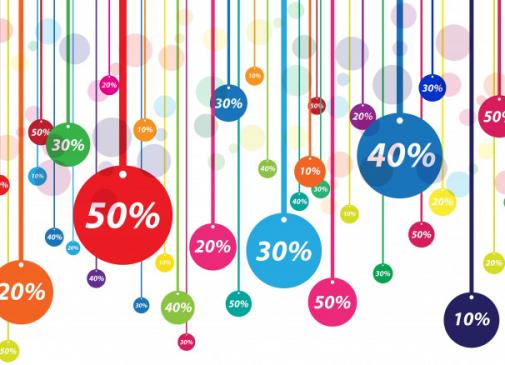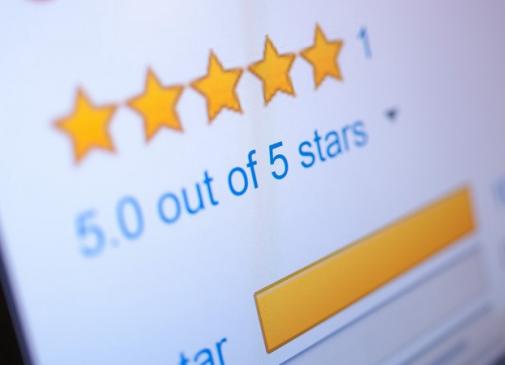A skyrocketing mobile user base and state-of-the art functionalities of smartphones and tablets took shopping into an entirely new era. Those retailers and marketing teams who want to win and retain digital consumers must embrace new trends. What are they? In a nutshell, tablets are hot, all-channel retailers are in and window-shopping goes mobile.
A skyrocketing mobile user base and state-of-the art functionalities of smartphones and tablets took shopping into an entirely new era. Those retailers and marketing teams who want to win and retain digital consumers must embrace new trends. What are they? In a nutshell, tablets are hot, all-channel retailers are in and window-shopping goes mobile.
View and swipe shopping
The number of users of mobile devices has been rapidly growing for a while and this trend is very unlikely to change. Larger retail locations know how to make a fast buck on constantly connected consumers. For example, an American discount retailer Target does its best to engage its customers by prompting them to interact with its brands and products. How? The retailer sets up a Wi-Fi hotspot in most of its retail stores and enables shoppers to shop and save on their smartphones. When purchasing goods online, visuals are often a deal-breaker. Browsing photos on mobile has become a new "window shopping." Wanelo, for instance, is a hugely popular mobile app because it features photos that users flip through as if they were window shopping. This type of window shopping experience is very likely to become very common, especially as marketers use big data to put the right products in front of customers to minimize the need to search and filter. In the era of powerful pictures, visuals-driven Tumblr has gone through the roof. One thing is clear: today's consumers expect retailers to give them an opportunity to swipe through full-size pictures and tap a single button to declare their interest or lack thereof.
Webrooming
Consumers frequently prefer to purchase goods in person because they want to see them, try them on, touch them, etc. It is especially true for products in such categories as clothing, electronics and appliances. According to a survey run by Google and Ipsos, the physical shop displays have gone digital, with consumers making use of a number of devices to do research prior to a visit to a brick-and-mortar store. Marketers must adapt their strategies to this radical change of how customers tend to shop nowadays. A recent study found that 88 percent of shoppers had researched a product online or on mobile before they bought it in brick-and-mortar stores. Known as "web-rooming," this trend is gaining popularity as more and more people browse from the privacy of their own homes. According to a survey analyzing consumer behaviours during a holiday season, around 55 percent of parents who own smartphones expect to check availability of items on mobile before going to a store to make purchases. Let's face it: webrooming is the new showrooming, meaning customers will do their research online but ultimately buy products offline or in-store. Retailers should also bear in mind that a customer can get easily distracted, so they'd better pay attention to the mobile devices shoppers might bring with them into a store or a shopping mall. Technique like geo-fencing or pushing offers or information directly to customers through existing mobile apps or NFC may help. The bottom line is to keep shoppers' attention on the offers provided by retailers. Marketers have to respond to this trend by making sure that all prices and promotions are the same online as they are in-store, helping customers add items to their wish lists for access in-store and showing customers whether the merchandise they are interested in is stocked on store shelves.
Couch commerce
There is no denying that tablets have dramatically changed mobile shopping behavior. Clever retailers know how to deliver tablet-specific experiences that are integrated with their current e-commerce offerings. Growing adoption of tablets cannot be ignored by retail players, given the fact that, according to experts, tablet users in the United States are expected to expand at a compounded annual rate of 51 percent from 2010 to 2015. According to eMarketer, only 39 percent of smartphone owners have made a purchase on a smartphone, compared with 63 percent of tablet users who have made purchases on tablets. Interestingly, despite the fact that tablets are mobile devices, almost 75 percent of purchases on tablets are made at home and most often on the couch. Last year one of the websites run a survey among 511 mothers about how they were going to spend their money during the holiday season. It turned out that 49 percent of respondents were going to make purchases for the holidays on a mobile device, out of which 37 percent intended to do their shopping on tablets. Shopping on tablets is mostly a matter of convenience. Comfortably curled up on their couch, users browse catalogues in cozy surroundings instead of venturing out into crowded streets. Moreover, a growing number of people use tablets to browse and shop in the evening while watching TV, and therefore these devices will eat into sales normally done via laptop. According to experts, marketers who are advertising a given product on TV will make it easy for couch shoppers to find that product via tablet. Briefly, couch commerce is emerging as an important retailer focus. Given an increasing number of tablets in the market, volume of tablet users, likelihood to purchase, and better shopping experience on a larger screen, tablets are becoming the go-to option for online shopping.
Sources: http://www.marketingprofs.com; http://blog.evolvecreativegroup.com; http://www.forbes.com; http://www.mobilecommercedaily.com; http://www.capgemini.com Photo: http://www.psama.org










